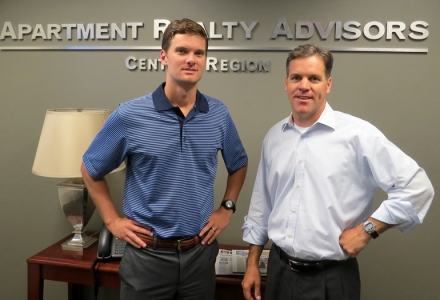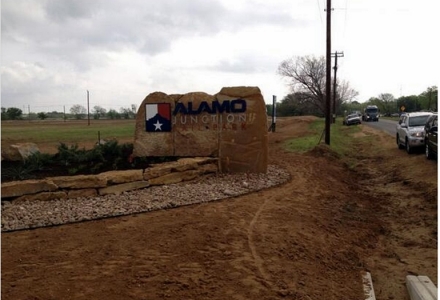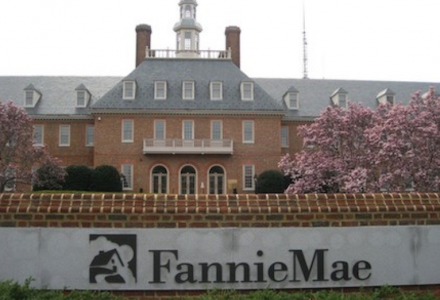|
Argyle Residential and Civitas EB-5 Capital—which are partnering on the 302-unit The Rivera—are only two in a long list of out-of-town developers and institutional players entering San Antonio, attracted to the Broadway corridor's new look.  The multiple mid-rise apartment projects that have delivered there since the Pearl Brewery redevelopment are game changers for Alamo City, because the corridor now feels like other popular cities, according to ARA's Pat Jones (right), who along with colleague Andrew Childers handled the 3.7-acre land disposition to the JV at 1130 Broadway. So it was no surprise that the location pulled in two significant out-of-city players, he says. Argyle is already a force in Austin, with five multifamily developments underway. Another attraction: incentives. Andrew tells us this deal benefited from the City's program to attract new residential development near Downtown. It's offering San Antonio water system fee waivers and tax abatements and reimbursements. (Those can add up to one-tenth of a project cost, which helps as land and construction costs rise.) Pat says The Rivera will be very luxurious, and residents will have exciting new restaurants across the street. Civitas committed $11M of equity to the four-story building. |
 |
Where Would We Be Without Drilling? |
||
 The Eagle Ford Shale doesn't stop with energy; it's also triggering demand for commercial real estate. Just yesterday, plans for a $63M manufacturing facility to supply the oil field workers was announced. (The connection makes sense: groundbreaking and drilling are similar skills.) And retail and housing are getting a boost from the expanding energy sector's workers, who typically earn 58% more than the national average wage, says JLL global energy practice guru Bruce Rutherford (here with wife Betty). That means more disposable income, making the Eagle Ford an attractive destination for multifamily, single-family, and restaurant developers, he says. |
 Yesterday, Alamo Tube Co announced the plans to develop a manufacturing facility in Alamo Junction Rail Park, just south of San Antonio, to produce parts used in oilfields. Storage and pipeline facilities operator NuStar Energy, in particular, has grown significantly, while industry leaders like Baker Hughes and Pioneer Resources maintain a strong presence and staff there, he tells us. On the other end of the I-35 barbell, Austin has nearly 300 companies employing almost 3,000 engineers and staff, many of these high-level, according to a 2012 UT study. Outside of work, Bruce golfs with his wife. (She shoots in the low to mid-80s, and he's in the mid-90s...we'll blame it on drilling vibration.) |
|
 |
Ex-Fannie Mae Turn to San Antonio Four former Fannie Mae execs are looking to the Lone Star State as they launch a new multifamily investment firm in Maryland: Railfield Realty, comprised of Ken Bacon, Darren Thompson, Todd Watkins, and Jon Siegel (above). You might remember Ken as head of Fannie Mae's multifamily business for 12 years (Todd and Jon worked under him; Darren was head of analytics). After leaving, an institutional investor asked Ken and Darren why they weren't out there pulling together a fund and investing themselves. After less than a year, they raised a $50M fund (US public pension money) to buy B-plus multifamily (built in the last 20 years) in strong Sun Belt submarkets, Jon says. Of course, Texas tops their list.  Railfield will first focus on high quality workforce housing in big Texas markets with solid fundamentals. It just closed on a 288-unit, light value-add property (above) in suburban San Antonio, Jon tells us. (For now, it's using third-party management.) The group will capitalize on the national relationships each partner built at Fannie, their in-depth familiarity with a broad range of markets, and their expertise in underwriting all kinds of apartments (probably everything short of rentals on the moon). It's definitely a mindset change moving from lender to buyer, Jon admits, especially in terms of how you view risk.  While many multifamily investors wonder if the best days have passed for apartments (we'll miss you, sky-high pricing and 6% rent growth), Jon says Railfield is bullish on the economy and not as worried about new supply (which has been very high-end) given its investment focus. He might be biased, he admits, but he sees a future for Fannie Mae in multifamily (those loan delinquencies were always low). Railfield even secured its first loan from the agency. Jon's looking forward to his annual summer trip to Charleston, where he'll hit the beach with his family. |
 |
5th Bisnow VideoWith Bisnow Education's latest video, Real Estate and Their Asset Classes, we drill down to fine-point dynamics of the industry itself, explaining vital differences among the many opportunities (economic and otherwise) commercial real estate has to offer. Peter Linneman, Wharton's real estate program founder and chairman, continues to share his extensive knowledge of how real estate sectors differ in operating, organizing and providing revenue, including:
This is our latest video and video No. 5 in our hugely popular educational series, with more to come. This one contains two-and-a-half hours of useful information, but it can be digested in bite-sized, five-minute spoonfuls that go down easy (watch a sample here). It's available to Bisnow readers for only $99, or purchase all five videos for $199. Order yours here, and for training program group licenses, email Will Friend at will@bisnow.com. |
 |






